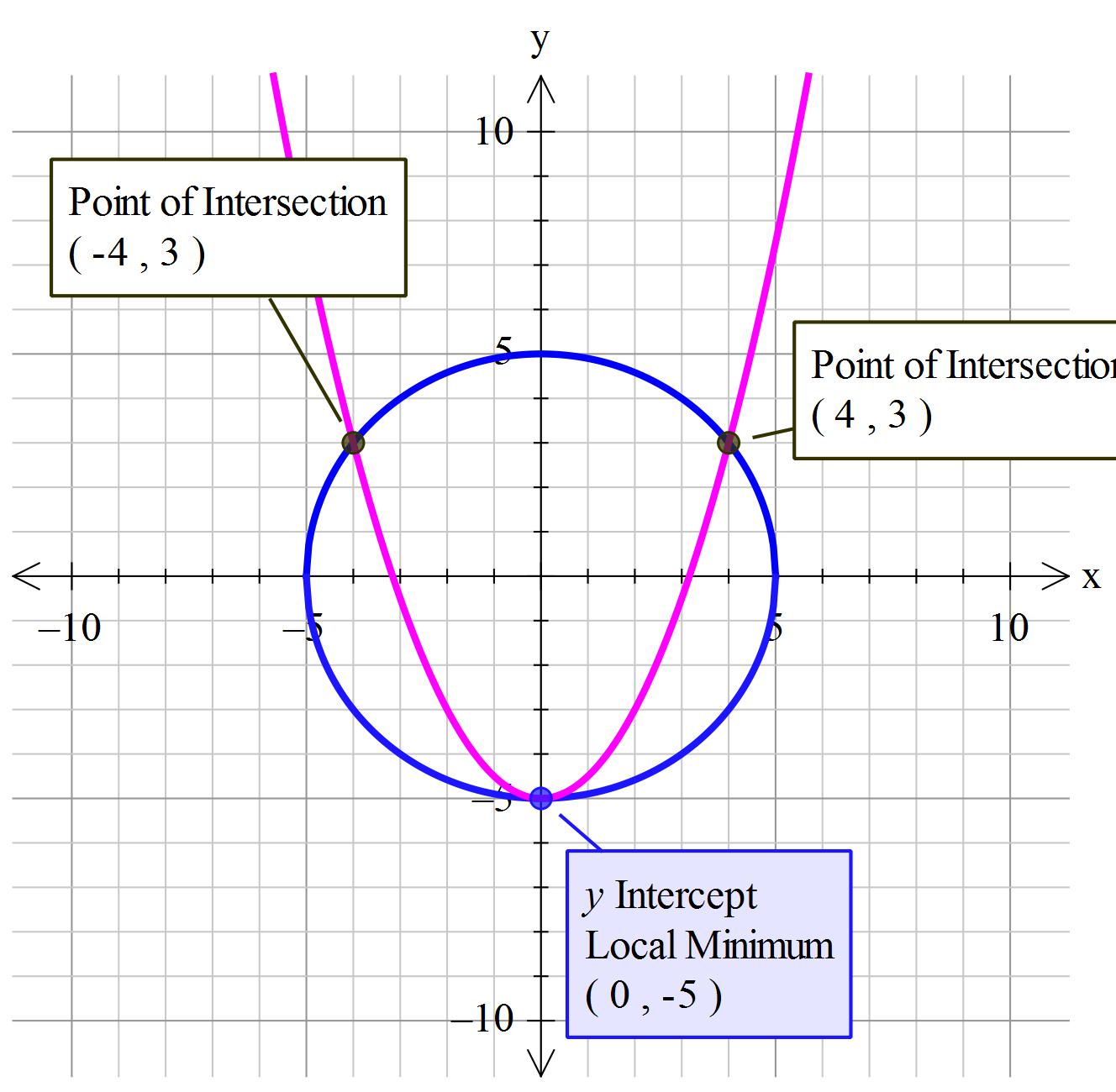Just an observation: #x^2+y^2=25# is the equation of a circle with the centre at the origin.
'~~~~~~~~~~~~~~~~~~~~~~~~~~~~~~~~~
Given:
#x^2+y^2=25# ...............................(1)
#y+5=1/2 x^2# ................................(2)
#color(blue)("Solving for "y)#
Rewrite (1) as: #x^2=25-y^2" " ...........(1_a)#
Rewrite (2) as: #x^2=2y+10" " ...........(2_a)#
Equate #(1_a)" to "(2_a)" through "x^2# This is the equivalent of substituting for #x^2#
#25-y^2=2y+10#
This is the same as
#y^2+2y-15=0#
#(y+5)(y-3)=0#
#" "color(blue)(=> y= -5" or " +3)# .........................(3)
'~~~~~~~~~~~~~~~~~~~~~~~~~~~~~~~~~~~~~
#color(blue)("Solving for "x)#
Substituting into equation #(2_a)#. The y is not squared!
#color(brown)("condition 1 "y=-5)#
#x^2=2y+10" " -> " "x^2=2(-5)+10#
#" "color(green)(x^2=0" " =>" " x=0)#
'...........................................
#color(brown)("condition 2 "y=+3)#
#x^2=2(3)+10 = 16#
#" "color(green)(x=+-4)#
'~~~~~~~~~~~~~~~~~~~~~~~~~~~~~~~~~~~~
#color(blue)("Putting it all together")#
The point of intersection are:
#color(blue)((x,y)->( -4,3)" ; "(+4,3)" ; "(0,-5))#



